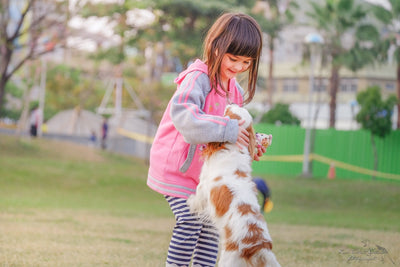Unlock the Secrets of Crate Training: How to Make Your Puppy's Crate Their Happy Place

Creating a Cozy Den: Practical Tips and Strategies for Positive Crate Training Outcomes
Top 5 Advantages of Crate Training Your Puppy

- Simplifies house training: Crate training is excellent for housebreaking your puppy, setting the foundation for good habits.
- Safeguards your home: Even in your absence for a brief period, an unsupervised dog can cause significant damage. On the other hand, a crate-trained dog won't ruin your furniture, floors, or belongings while you're away.
- Ensures your dog's safety: Crate training effectively reduces the risk of your puppy ingesting harmful substances or getting injured when left alone. By creating a positive association with their crate, your dog will also experience reduced separation anxiety during extended periods apart.
- Facilitates hassle-free transportation: Traveling with your dog becomes much more manageable when securely contained in a crate.
- Prepare your pup for kennel stays: Crate training helps your dog adapt more quickly to kennels or dog hotels, ensuring a positive experience for them.

Key Considerations Before Starting Dog Crate Training
- Limited bladder and bowel control in young puppies: Remember that they can only hold their bladder and bowels for a few hours, not an entire workday or overnight. Forcing a dog to soil its crate due to excessive confinement will make house training more challenging.
- Create a safe space for extended periods: While introducing your puppy to the crate, provide an alternative area for them to stay when you're unavailable for longer durations, such as during work hours or at night.
- Design a dog-friendly environment: Consider setting up a small bathroom, kitchen, gated-off section of a room, or an ex-pen with the dog's crate (door removed), water, toys, and a designated potty area. The potty area could include newspapers, pee pads, or a square of sod in a cat litter box. This arrangement allows your dog to sleep in the crate while using the approved, easy-to-clean surface for their bathroom needs.
- Keep your dog's age in mind: Use it in months plus one to determine the maximum number of hours they can be crated. Make sure to follow this guideline when crate training your puppy.

Step-by-Step Guide: Successfully Crate Train Your Puppy
- Choosing the right dog crate: Most pet supply stores in the UAE stock various dog crates to suit your canine's preferences. Enclosed plastic crates are ideal for dogs that enjoy sleeping in the dark, while collapsible wire crates are generally more versatile. Crates are available in numerous sizes, so picking too big and too small is crucial. An appropriately sized crate allows your dog to stand up, circle, and lie comfortably. When crate training a puppy, purchase a crate divider to temporarily reduce the interior space based on the size of an adult dog.

Key Attributes of an Ideal Dog Crate:
- Durability: A robust crate is essential, as some dogs may feel stressed and attempt to chew. A sturdy crate helps prevent chewing-related damage.
- Multiple entrances: Providing more accessible access to the crate for both pets and pet parents, multiple entry points are a desirable feature.
- Ease of cleaning: Crates can become dirty quickly, particularly during house training. Metal and plastic crates are typically easier to clean compared to fabric ones.
- Rounded edges: To avoid injuries for you and your pup, opt for a dog crate with rounded corners instead of sharp ones.
- Portability: A suitable crate should be compact enough to carry, have wheels for rolling, or be collapsible to facilitate transportation to different locations.
- Create a welcoming environment: Make the crate inviting with chew toys and blankets. For added comfort, you can use a puppy bed instead of blankets, but be cautious as some dogs may view the bed as a suitable spot for relieving themselves.
- Position the crate strategically: Locate the crate in a room where your family typically spends a lot of time, such as the family room or living room. Place the crate as close to an outdoor exit as possible to facilitate easy access to the garden or yard for bathroom breaks.
- Encourage your dog to enter the crate: Scatter some treats on the floor near the crate entrance and throw a few inside. Allow your dog to enter the crate voluntarily to eat the treats without forcing them inside. Keep the crate door open during this stage, and be patient, as some dogs may take days to enter willingly.

- Serve meals inside the crate: If your puppy is already comfortable, place their food dish towards the back. For anxious dogs, position the dish at the entrance and gradually move it further inside with each mealtime.
- Close the crate door: Once your puppy is at ease eating inside, start closing the door during mealtimes. Initially, keep the door closed only until they finish eating. Gradually increase the duration the door remains closed after each meal, ignoring whining. Only open the door when your dog is quiet, ensuring they don't associate whining with being let out.
- Introduce a crate command: Train your puppy or dog to enter the crate using a command like "crate" or "kennel up" without always needing treats. Begin by pointing to the crate door with a treat in hand, and when your dog enters, offer praise and the treat. Over time, use the command without a treat until it's no longer required.
- Incrementally extend crate time: Begin by crating your puppy briefly while you're in the room. Progressively increase the time, eventually leaving the room for a few minutes. Once your dog can sit quietly in the crate for about 30 minutes while you're away, you can start leaving them crated for brief periods when you leave the house.
- Crate your puppy overnight: Unlike adult dogs with developed bladder control, puppies may need to relieve themselves during the night. Place the crate near your bedroom, and when you hear your puppy whining, use your housebreaking command. If they react excitedly, take them outside to do their business, avoiding playtime before returning them to the crate. If your puppy doesn't respond to the command and you believe they don't need the bathroom, ignore the whining and keep them crated for the night.
What to Avoid and Tips for Crate Training Success: A Comprehensive Guide
Don'ts for Crate Training Your Dog

Tips for Crate Training Success
- Choose the correct crate size: As your puppy grows, it may require different sizes. The crate should be large enough for your dog to walk calmly stand and turn comfortably but not so big that it allows for separate potty and sleeping areas.
- Vary crate timings: To prevent your dog from associating crate time with your departure, alternate when you put them in the crate before leaving.
- Keep departures and arrivals low-key: Avoid drawing attention to your departures and arrivals, as this can create excitement or anxiety.
- Crate your dog when you're home: Occasionally crate your dog while you're home to prevent them from associating the crate solely with your absence.
- Position the crate near your bedroom: Keep the crate close by to avoid feelings of social isolation and to allow your dog to alert you if they need a potty break during the night.
Potential Problems and Solutions in Crate Training Process
- Too much time in the crate: Prolonged confinement can cause stress and frustration in many dogs. Ensure your dog has ample time outside the crate and consider alternative arrangements.
- Whining: If your dog whines in the crate, ignore it unless they need to go outside. Rewarding whining behaviour can reinforce it.
- Separation anxiety: Crate training alone won't solve separation anxiety problems. Counter-conditioning and desensitisation techniques may be required, and professional help from an animal behaviourist or dog trainer might be beneficial.

















































































































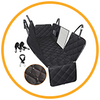



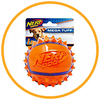

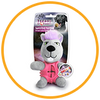














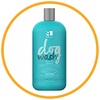

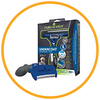


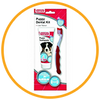


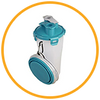
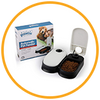


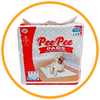
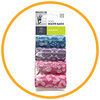
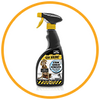
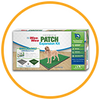

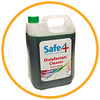







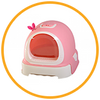
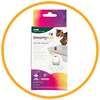

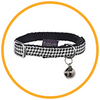











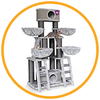



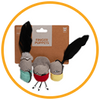
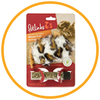



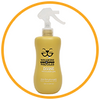




 Support
Support
 Account
Account Facebook
Facebook